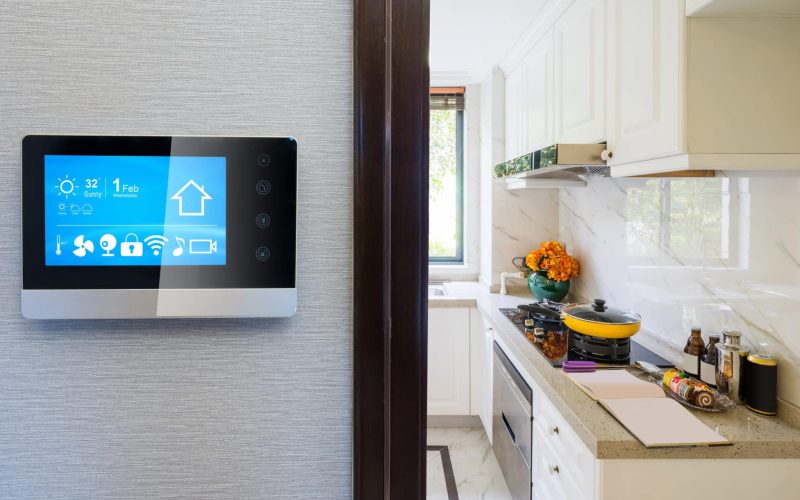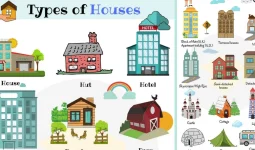Automation can help you automate your home and simplify many daily tasks.
Whether you want to make an everyday chore easier or just test out some cool new technology, there are plenty of clever ways to bring automation into your life and make it easier.
Check out these genius DIY home automation systems to help you automate your home like never before!
A Smart Washing Machine (at Your Phone’s Command)
If you’ve ever been out and about only to realize you forgot to start the washing machine.
You know the pain of returning home to get your laundry started.
But with the help of DIY home automation systems, you can create a system that will start your washer at the push of a button from your phone! You only need a smart outlet, an IFTTT account, and the IFTTT app.
The process involves downloading and installing the app on your phone.
Then, create a custom command for each appliance (or all appliances) to turn them on or off when needed.
For example, if you wanted to start your washer with the push of a button from anywhere in the world, you would download the IFTTT Maker channel onto your phone and click New Applet. Next, choose If this, then that, and select an event (like Washing Machine).
Choose what should happen (like turning it on), give it a name (The Washing Machine), tap finish, and boom–you’re done!
Create An App-controlled Cat Flap
Is your cat constantly meowing to be let in and out of the house? If so, you need DIY home automation systems, such as installing a cat flap that can be controlled with your smartphone.
This way, you can let your feline friend in and out without getting up every time.
Plus, it’ll give you some peace of mind knowing that your pet can’t escape if there’s a fire or another emergency.
Meanwhile, each room needs its smart speaker: If you’re starting from scratch with home automation, ensure each room has its smart speaker.
One for the living room, one for the kitchen, and one for each bedroom will do the trick!
And don’t forget about an outdoor speaker too! You can connect them all through an app like wireless speakers.
Smart Light Bulbs
Swap your traditional light bulbs for smart LED bulbs to reduce your energy consumption (and your electric bill).
With the help of DIY home automation systems, you can control smart bulbs with your voice or phone and even schedule them to turn on and off automatically.
Also, most smart bulbs are dimmable so that you can create the perfect ambiance for any situation.
One of the coolest things about smart bulbs is that you can change their color to suit your mood or décor.
Some smart bulbs even come with a night light feature if you have trouble falling asleep at night. This emits a soft, calming glow.
Remote Controlled Blinds
There’s nothing worse than waking up in the morning and having the sun blaring in your face.
You can easily block the light with remote-controlled blinds and get a few more minutes of sleep.
They can also help keep your home cooler in the summer by blocking out the sun’s heat.
Set your blinds to open at an optimal time when it’s not so hot outside, and close them when the day has cooled down.
Turn Off The TV With Your Phone
How often have you reached for the remote control only to realize it’s not there? If you’ve ever lost your TV remote in the couch cushions, you know how frustrating it can be.
But what if you could turn off your TV with your phone? With a little bit of DIY home automation systems hacking, it’s possible.
You only need a smart home hub and cheap devices like outlets and light switches.
With a little configuration, you can program your devices to do all sorts of things–including turning off your TV.
Here’s how it works: First, you’ll need to install a smart home hub like the Amazon Echo or the Google Home. Then, plug it into an outlet near your TV.
Next, configure that outlet to shut off when you say turn off the TV. Finally, download IFTTT (if this, then that) on your phone and create a new TV Off recipe.
The recipe will use triggers from IFTTT-compatible apps such as ESPN or Facebook to tell IFTTT when you’re watching sports or scrolling through Facebook updates, respectively. IFTTT will then activate your outlet, cutting power to the TV.
An Energy-efficient Door Lock
Regarding DIY home automation systems, one of the most important things you can do is make your home more energy efficient.
This not only saves you money but also helps reduce your carbon footprint. One way to do this is to install an energy-efficient door lock.
Here are seven easy steps to do just that:
- Choose the right door lock. There are many different types of energy-efficient door locks on the market, so research to find the one that best suits your needs.
- Follow the manufacturer’s instructions. This may seem like a no-brainer, but it’s important to carefully read and follow the manufacturer’s instructions to avoid any damage or issues with your new door lock.
- Clean off the area where you’ll install your door lock.
- Drill pilot holes where needed (usually at least three).
- Secure your door lock with screws and then bolt if necessary for extra security (depending on which type of energy-efficient door lock you have).
- Putty over any exposed screw heads or bolts if desired (some people like how this looks, while others prefer a smoother look).
- Reinstall all hardware onto exterior doors, such as hinges, handles, and door knobs, before shutting them back up tight again!
A Smart Light Timer (Perfect If You Forget To Turn Lights Off!)
If you’re like most people, your smartphone is never more than a few feet away from you.
So why not put it to good use and automate your home with the help of DIY home automation systems? With just a few simple supplies, you can turn your phone into a remote control for your heating pad.
A Heating Pad Remotely Activated By A Smartphone
Looking for a way to automate your home and make your life easier? Look no further than these genius DIY home automation systems.
From a heating pad, your smartphone can remotely activate automatic window blinds that open and close based on the time of day. These hacks are sure to make your life a little bit easier.
And best of all, they’re all relatively easy and inexpensive to implement. So what are you waiting for? Start DIY home automation systems today!
A Remote-controlled TV Using A Raspberry Pi Device
You can use a Raspberry Pi device to control your TV remotely.
All you need is a simple IR LED and transmitter, which you can connect to the Raspberry Pi’s GPIO pins.
Then, you can use a program like LIRC to configure the Raspberry Pi to send signals to your TV.
This is a great way to automate your home entertainment system and simplify your life.
Play Your Theme Music When You Enter a Room
Setting up these DIY home automation systems allows users to play their theme music when they enter a room.
To do this, you will need an app called I’ve Got Rhythm, which uses the proximity sensor on your phone to detect when you enter a certain space.
The other equipment you’ll need are Bluetooth speakers and a wireless doorbell.
You must plug in the Bluetooth speaker near the door and sync it with your phone to be heard when someone rings the doorbell or walks into your space.
Build a Panning And Tilting DIY Security Camera
If you’re looking for a simple and cheap way to add security to your home, don’t forget your DIY home automation systems.
DIY home automation systems panning and tilting security cameras are a great option.
You can make it yourself with just a few materials, giving you the peace of mind of knowing that your home is being monitored.
Meanwhile, you can use several inexpensive USB cameras for this project; they all come with their own mount.
Attach them using zip ties so they stay in line, then attach them using another zip tie at the end.
Also, you’ll need to find an old T-shirt or fabric scrap and cut it into long strips to act as cushions between each camera so they don’t touch when you move them around in any direction.
Connect all three (power, video, remote control). And then, wrap them in fabric or plastic before securing them onto a board with screws or nails.
Conclusion
Following these simple tips, you can easily turn your home into a haven of relaxation and luxury.
With a little creativity and elbow grease, you can enjoy all the benefits of a high-end DIY home automation system without spending a fortune.
So what are you waiting for? Get started today and see how easy it is to create your oasis.








